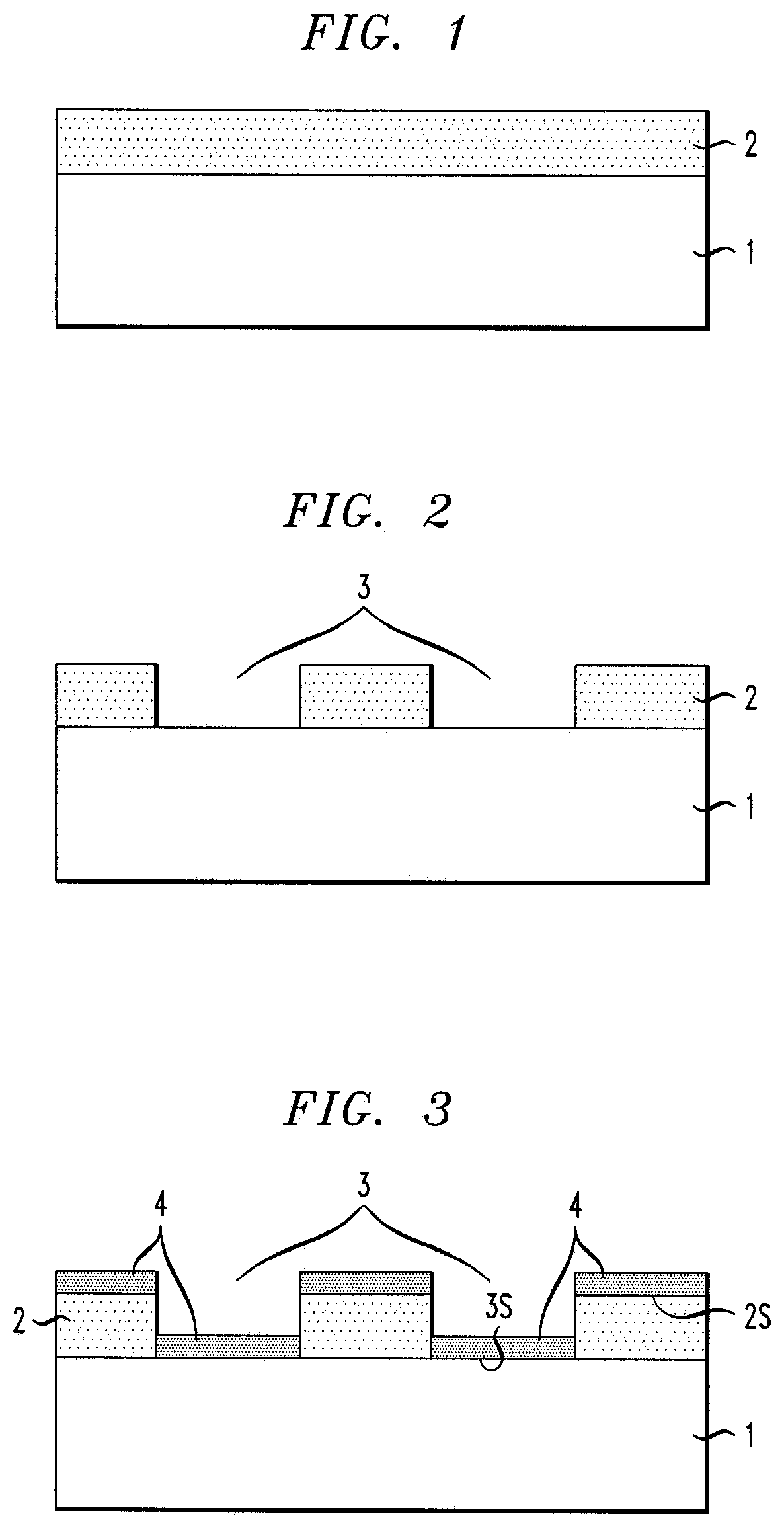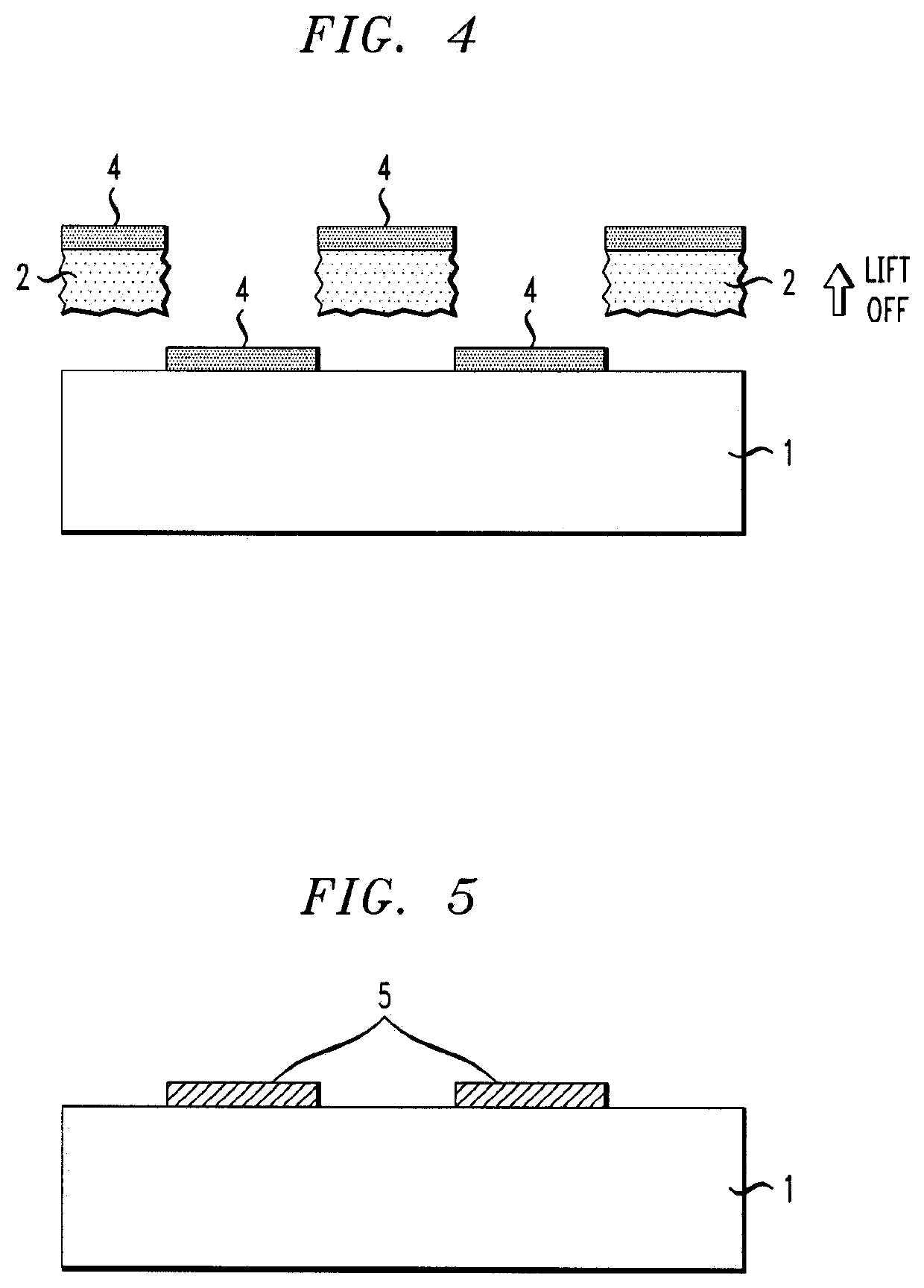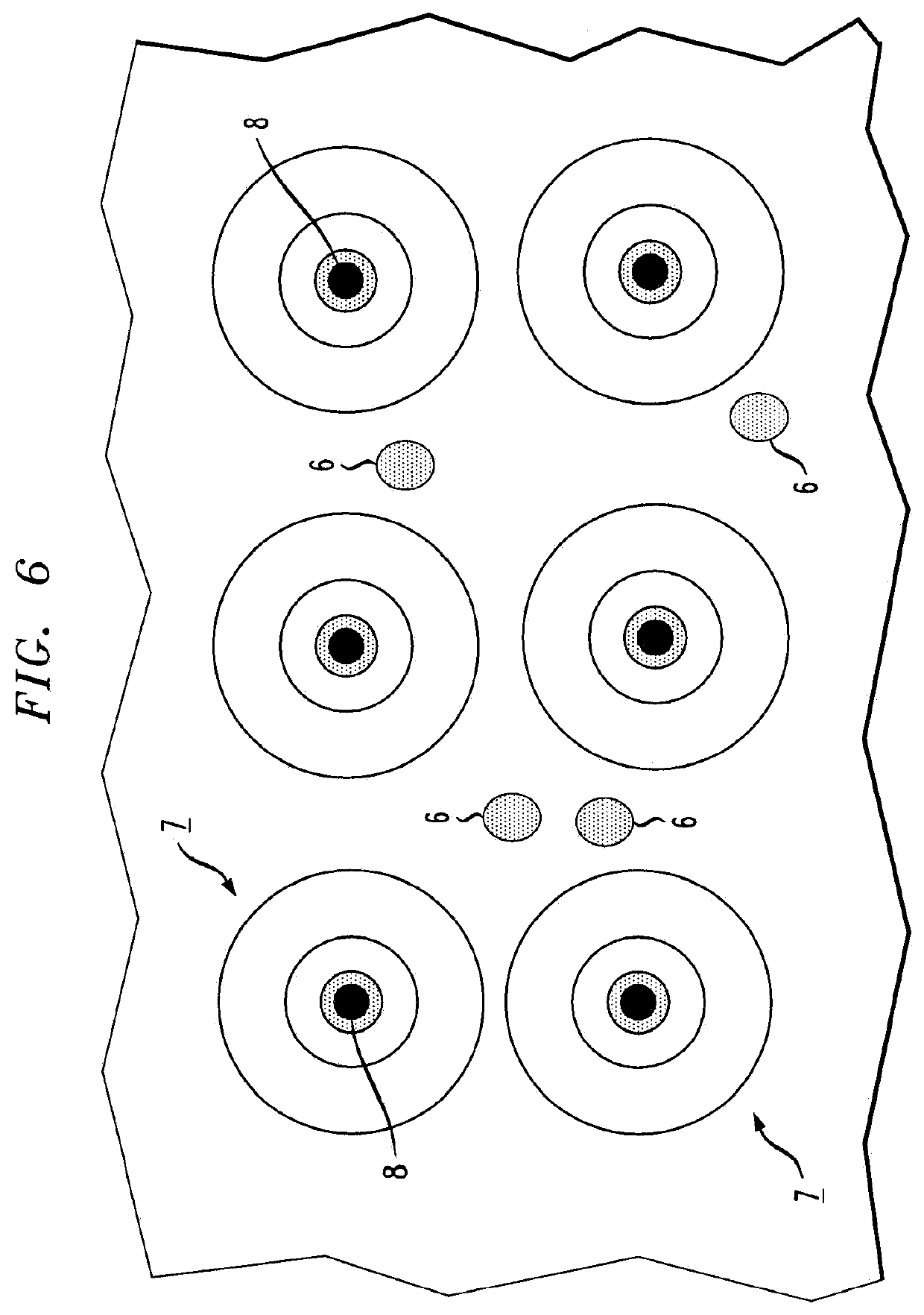Method of reducing lift-off related redeposit defects on semiconductor wafers
a technology of semiconductor wafers and defects, applied in semiconductor lasers, laser details, electrical equipment, etc., can solve problems such as difficult removal and impact on the yield of final acceptable devices
- Summary
- Abstract
- Description
- Claims
- Application Information
AI Technical Summary
Benefits of technology
Problems solved by technology
Method used
Image
Examples
Embodiment Construction
[0016]As mentioned above, lift-off is a technique used in some semiconductor fabrication processes to create a patterned layer of target material (for example, metal) on a wafer structure. FIGS. 1-5 illustrate a set of typical prior art process steps used in performing a typical lift-off technique. FIG. 1 illustrates a starting material for the process, in the form of a substrate 1 that has presumably been processed to include various semiconductor devices / regions (not specifically shown). To begin the formation of a metal contact structure using a lift-off process, substrate 1 is initially covered with a photoresist material 2. Photoresist material 2 is subsequently patterned, using well-known techniques, to expose regions 3 where it is desired to form the layer of target material. This step in the process is shown in FIG. 2.
[0017]Once patterned, a layer 4 of the target material is deposited (perhaps using an evaporation process, for example) to coat the top surface of the structur...
PUM
| Property | Measurement | Unit |
|---|---|---|
| pressure | aaaaa | aaaaa |
| pressure | aaaaa | aaaaa |
| contact angle | aaaaa | aaaaa |
Abstract
Description
Claims
Application Information
 Login to View More
Login to View More - R&D
- Intellectual Property
- Life Sciences
- Materials
- Tech Scout
- Unparalleled Data Quality
- Higher Quality Content
- 60% Fewer Hallucinations
Browse by: Latest US Patents, China's latest patents, Technical Efficacy Thesaurus, Application Domain, Technology Topic, Popular Technical Reports.
© 2025 PatSnap. All rights reserved.Legal|Privacy policy|Modern Slavery Act Transparency Statement|Sitemap|About US| Contact US: help@patsnap.com



